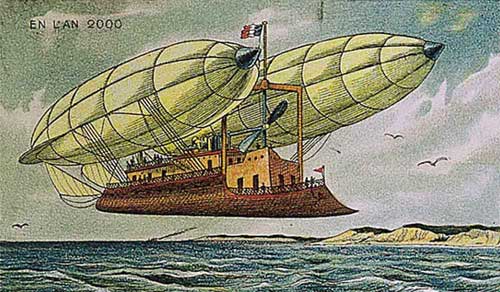
An artist's rendition - dated 1910 - of modern travel by year 2000. The past is so much more awesome than the present. Image by www.airships.net.
A quick, fun look at the history of Zeppelin travel and its (im)possibility for future applications:
Year which Zeppelin idea first materialized: 1874
Year which Wright Brothers first took flight in Kitty Hawk, North Carolina: 1903
Speed of initial Zeppelins: 21km/h
Zeppelin length: 126m
Bus length: 12m
First successful Zeppelin: LZ3
Total kilometres travelled: 4398
First revenue airline service in the world: German Airship Travel Corporation (aka DELAG)
First regular transatlantic airship line: 1930
Travel package offered: Frankfurt, Germany to Recife, Brazil
Total travel time: 68 hours (~3 days)
Zeppelin nickname during WWI: Baby Killer
Killer dish inspired by Zeppelins: Cepelinai (Lithuania’s national dish)
Modern airship technology: Zeppelin NT
Maximum Speed: 125km/h
Popular lifting gas in early Zeppelins: Hydrogen
Result: Hindenburg Disaster
Safer alternative gas used in present day applications: Helium
Cost to fill up Zeppelin: $1.5 million USD
Percentage of world helium supplied and controlled by US: 80
Number of years before US helium stockpile is exhausted: 4
Future cost of inflating a party balloon: $100
Balloon volume: 4 cubic feet
Zeppelin volume: 300,000 cubic feet
Projected future cost of filling up Zeppelin: $7 million
